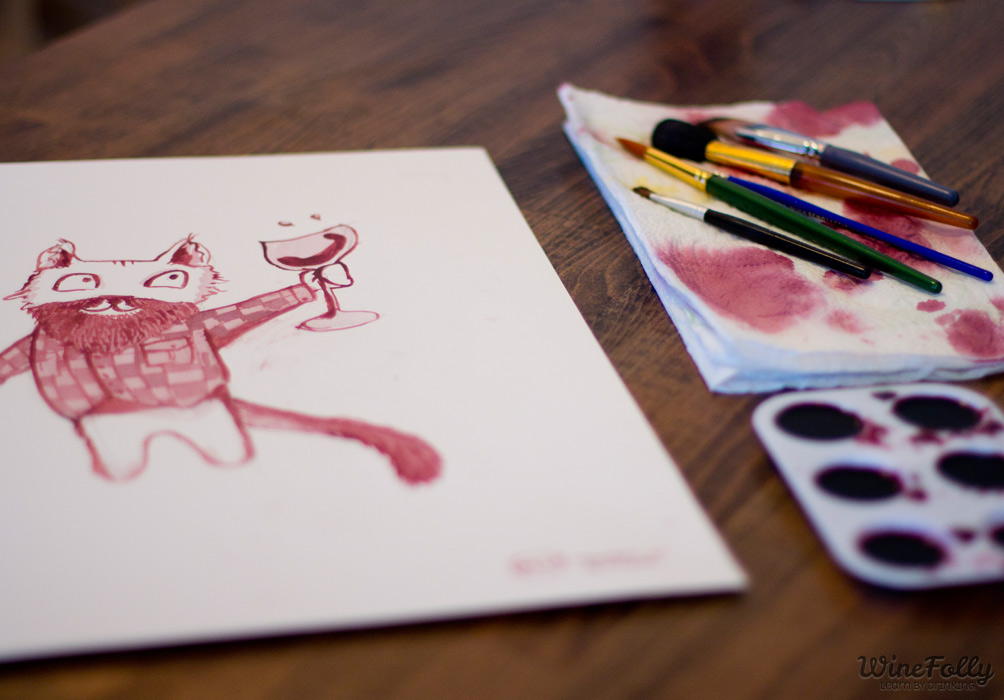A quick step by step guide to painting with wine, including a time lapse video. Avoid common mistakes and get the best results painting with wine and other common foodie materials like coffee and tea.
How to Paint with Wine
Materials For Painting with Wine
Wine, tea and coffee are all water-based, so you can use the same tools from watercolors for painting with wine.
- Watercolor Paper or a prepared watercolor block. We used a prepared watercolor paper*
- A Bottle of Red Wine Darker = better; we used Yellow Tail Shiraz. 2 cups for paint. Drink the rest.
- Brushes and a Palette We used round brushes (size #2 and #10) and a $1 palette.
- A rag or paper towels

* TIP: To prepare watercolor paper for painting with wine, wet the paper with a sponge and tape it on all sides to a board or desk using paper tape (the kind that sticks when wet). Let dry for about 2 hours. This is to ensure the paper doesn’t warp when you paint. If you don’t have time, use a watercolor block which is presoaked.
Step by Step Guide on Painting with Wine
For a more purply hue choose Merlot, Cabernet, Shiraz, Syrah, Petite Sirah or Malbec. For a lighter, more red-orange hue try Tempranillo, Nebbiolo or Sangiovese.
1. Prepare the Wine
Reducing the wine is the only way to get the richest, darkest color. We put 2 cups on medium-low heat and reduced for about 10-12 minutes. It will burn in your pan if you reduce too much!
2. Sketch Your Image & Apply Wash
Make a basic sketch with pencil on your watercolor paper. Apply the filled-in areas first with a large brush wash of wine. You can do this by wetting the paper with water first, but we found the non-reduced wine to be perfect for the wash.
SEE IT: Watch the first part of the video for an example of washing the prepared paper with wine.
3. Wait for Wash to Dry
Stand back, drink your wine and think about what to do next. This was one of those moments when we wished we’d purchased something fancier.
Wine is Sticky! Try not to set your wrist on your wine painting, it will stick to your hand and make nasty smudges on your art.
4. Fill in Dark Areas
The dark areas of your wine painting can be filled in with a larger brush. You can go over the areas again to make the color richer but be sure to wait until the wine dries.
5. Outline
Outline your piece or fill in the dark areas with the most reduced wine. Go slow and refill your brush often in order to keep the color as rich as possible. Having worked with watercolors before, we found the wine to be a little trickier in this part because it’s so sticky.
Preserving Your Wine Painting
After finishing the painting, we left it on the kitchen table for a couple of hours. It looked great, but dust was starting to stick to the sugar in the wine and then the cats walked on it. Game over. So if you produce a masterpiece a.) I’d like to see it… and b.) You should protect it. Do yourself a favor and buy a can of Archival Matte Spray. Spray it. Wait. Then store your wine painting vertically so no roaming pets can get their greasy paws all over it.
Sources
Art Fact Music Sweden is available for free download on last.fm
